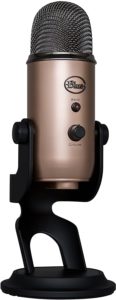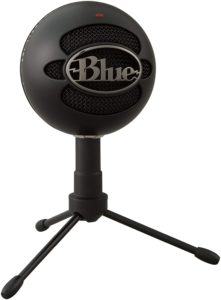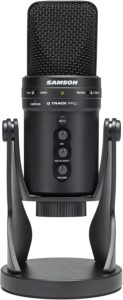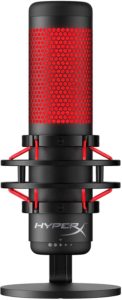Best microphone for streaming
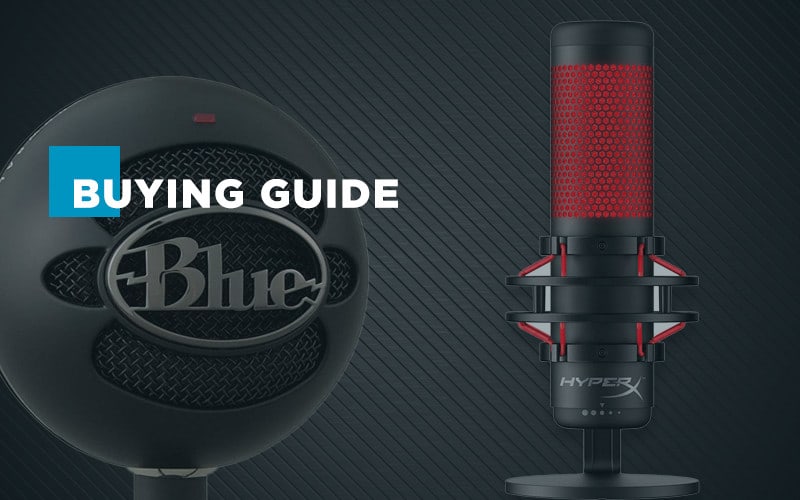
Table of Contents
In this series, we have already looked at the best webcam for streaming and we have also previously looked at the best microphone for podcasting, along with a whole host of settings tweaks for popular mics such as the Blue Yeti and Snowball. We haven’t yet covered the best microphone for streaming, so that’s what we are here to do today.
If you are keen on getting into Twitch and potentially even making money from streaming of one kind of another the absolutely essential piece of kit you need to spend some money on is your mic.
You can get away with a poorer webcam (or even no webcam), lights, green screen backgrounds, and the like, but if your audio sounds like crap people are simply not going to hand around and listen if it grates on them.
You would be amazed by the number of streamers who get absolutely nowhere by having poor quality audio. It’s hard enough to get an audience in this day and age, why lower your chances even more.
So, with that in mind, let’s have a look at helping you up your streaming game with what we believe are the best microphone for streaming out there right now.
Products at a Glance
How we picked the best microphones for streaming
We have chosen five of the most popular microphones on the market today used by streamers the world over. There are no poor quality offerings here, any one of them will do the job for you, but there are features some have that others don’t that will swing the decision for you one way or another. Some are bigger than others, and that may affect what accessories you need for them. The heavier ones may not sit well on cheap boom arms or fit in cheaper shock mounts. We will guide you here too.
How did we test them?
A simple voice test played back for clarity and then repeated in OBS over the top of a game. Microphones were placed at the recommended distance in the cardioid mode where available and marked for clarity, echo, and tone.
Product Reviews
- Great built quality
- Comes in several colors and models
- Four audio patterns
- Plug and play
- Only get the best out of it with tweaking.
Before we start with this one, it’s not blue okay. Well, you can get it in blue, but Blue is the manufacturer, they also make the Blue Snowball. I’ve been using a Blue Yeti for my streaming and, more recently, all my virtual meetings and calls for a long. Coincidentally, mine actually is blue as well.
The Yeti certainly wasn’t the first USB microphone I tried using in my setup. I had a Snowball a while back, which was fine, but I didn’t really like the design, so I sold it on. Then, when I was looking for a mic more recently, I initially went for a cheap option on Amazon. It had great reviews, even video reviews on YouTube, but it didn’t work for me. The volume level was so low it was almost inaudible. Some Google-Fu revealed that there is a problem with Windows 10 and some USB microphones – check out the FAQ below for more information. Anyway, back it went, and I resigned myself to spending more and plumped for the Blue Yeti, and it’s been an excellent choice for me.
We have talked about the Yeti so many times and with good reason.
Everything about the mic screams premium; it’s brushed metal casing with metallic paint options, easy to reach control knobs on the front and rear, and the weight of the thing, especially when combined with the stand.
With said stand, it has quite a large desktop footprint that doesn’t make it easy to position correctly because your keyboard will generally get in the way. Ideally, you will have to place it behind your keyboard directly in front of you, but I couldn’t do that because I have an array of other equipment there.
My next step was to buy a desk-mounted microphone boom arm. Here you have to be careful because the Yeti is too heavy for a lot of the cheaper ones. It’s the same with a shock mount (the mount that suspends a microphone, so banging on the desk or typing doesn’t cause vibration and noise). The official Blue one is expensive, and I still haven’t found a suitable cheaper alternative – if you have, leave a comment and I’ll thank you forever!
Technologically the mic itself has three condenser capsules that can easily be switched between Cardioid/Omni/Figure 8 and Stereo. This covers you for pretty much any recording scenario from solo speaking to interviews and for podcasting, it is almost perfect.
On plugging in the mic effectively becomes a sound card you can select. It has its own headphone jack so you can monitor your voice and a volume knob for that too.
It’s not the cheapest add-on, it carries a little bit of a premium price coming from Blue, but there are a Yeti Pro and a Yeti Nano (small form-factor) that give you some choices on the price you pay.
You will love it though; there’s a reason so many people use it for speaking purposes. You might be able to get better sound from other mics, but the Yeti gives you great sound from the get-go without any post-production or messing around. If you speed some time tweaking as well, you will get even better results.
Highly recommended.
- Aimed at vocals of all kinds
- Quality brand
- XLR not USB
This is the only XLR mic we have in the round-up here, which means you can’t just plug it into your PC and get going. This is a more pro-level piece of kit that is completely aimed at vocal work so it is ideal for streaming and podcasting.
More accurately, not only is it build for vocals, it’s specifically aimed at speech and, therefore perfect for what we need here. Another feature that pulls it away from the competition is that it has a pop filter and shock mounting built into the body, which is both clever and money-saving.
It is a one-trick pony in that it’s really only for speech, but what a trick that is if you are getting into the streaming business.
The polar pattern means this excels even in the noisiest of environments, so if you are gathering interviews for your cast you can be sure when you get back to edit it you will have minimum fuss in post.
The XLR means it’s not for everybody, and you will need some extra equipment, but if you want to take your show to the next level, this is the mic for you.
- Very decent price point
- Good sound quality
- Great first mic
- Looks, er unusual
- Low tripod
The Snowball has been around for years in various iterations. As I said in the introduction, it was the first decent-quality USB mic I ever bought. And as I also said, I sold it on. This was in part to do with the fact I wasn’t using it as much as I thought I would, but also I wanted something a bit more ‘normal’ looking.
You can’t get away from the fact though that this will also be many people’s first mic when it comes to a streaming setup.
The low relative price and the quality you get for that money mean that it a solid option if you are starting out streaming.
As well as the cardioid pattern you will need for streaming it only comes with one other pattern – omnidirectional so if there are a few of you playing it should pick everybody up. It’s not as good as any of the other four on show here, but it’s much cheaper and still a great buy, especially if you can pick it up in a sale or something.
- Extra audio interface
- Good build quality
- As good as the Yeti
- Might be overkill for streamers
This is another great option from Samson. If you only had a really quick glance at it you would be forgiven for thinking it might be an offering in the Blue Yeti line-up, the shape and stand aren’t that dissimilar from each other.
The G-Track Pro offers a feature you don’t get readily elsewhere in that it is actually an audio interface built-in – what this means in effect is you can plug a quarter-inch jack into it connected to, say a guitar or even a second microphone and mix the two signals together. It’s a really nice feature, but not one you really need for streaming, so it could be overkill, which is why it didn’t make our top list.
It is, however, a great-sounding USB mic with three patterns and it comes at a good price. Is it as good as the Yeti? It’s no worse that’s for sure with clear sounding audio and a generally nice look and feel to the whole package.
It may come down to personal choice as to whether you feel the extra input is necessary for something else you may use it for. I don’t sing, and I don’t play the guitar so I don’t need it, but somebody might.
- Stunning looks
- Superb audio
- May not fit into everybody’s set up looks-wise.
This is, without a doubt my favorite looking microphone, not that that should matter but the red coloring on the HyperX Quadcast makes it really modern and stylish looking.
HyperX is a company you may have heard of from their gaming headset range but this is a great opening effort. The sound of the captured recording has a warmth to it that many other microphones will struggle to match without tweaking and work in post.
It comes with a shock mount and pop filter as well that may save you money until you can upgrade them to a decent mic arm. Again, like the other mics on show here it won’t see you wrong, but if you want something like looks a little more “gaming” for your trendy new stream, you might just fall in love with the Quadcast.
Things to consider
Other products – will I need any?
The short answer is no, you won’t need any, but you the longer answer is that you will get better results if you add a pop filter, an off-desk mic stand, and a shock mount. Now a couple of the picks here have the pop filter included, the Rode has it built-in along with some shock mount technology which is cool, so you won’t have to get one, but you can get a cheap one for about $10 anyway.
The stand and the shock mount are going to cost more and worth considering if you go the Yeti route is it’s none standard size, right down to its screw thread, which is annoying.
Positioning
Cardioid microphones should be a couple of inches from where you are speaking to pick up the most clarity, so if you use the desk stand you are going to need space. Also, if you use the desk stand, they are going to pick up noises every time you bang your knee on the table.
The best option is to get a flexible boom arm that can be positioned and then moved out of the way when you are not using it. Just make sure you get one that will support your mic’s weight.
Will my microphone work with Windows 10?
Obviously, if you go the XLR route then yes. USB is a slightly different beast.
This will come down, seemingly to how much you spend, otherwise, it is hit or miss. Any of the big brands, and certainly the mics listed here will work with minimal effort. Any USB mic that uses the generic Windows 10 driver, which is still broken after all these years, will only record audio at such low levels as to be totally useless. We can’t believe it hasn’t been sorted out yet, and it may well never be, but stick to the known brands, and you should be fine.
If you really do want to go for a cheaper option, there is a workaround here but it involves extra software and settings, so we aren’t recommending that as a route you go down.
Can I monitor my incoming audio with no latency even though it’s a USB connection?
You can, because all the mics here have an onboard headphone jack with allows you to get to the signal before USB can add some tricky old latency too it. It’s another wire snaking across the place, but if you are recording vocals, it is a Godsend of an option on all three.
Our Verdict
I seem to always pick the Blue Yeti in these roundups. I know it like the back of my hand and now how versatile it is with very little effort put in. There are other great options here too. I’ve spoken about how good the Procaster is but the fact it is XLR takes it away from the masses.
Both the Samson and the HyperX are great options too. I like the look of the HyperX but not everybody will. The Blue Yeti is tried and tested at this price-point though. You know when you get one it will do exactly what you need it to with the bare minimum for fuss. And for that simple reason, it wins again.


